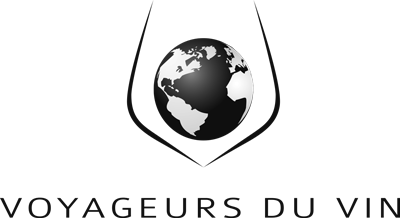History of M. Chapoutier
The history of M. Chapoutier began in 1808, when it was founded as a modest family estate focused on Rhône Valley wines. It grew steadily in prominence, but the turning point came in 1990 with the arrival of Michel Chapoutier, whose bold vision and innovative spirit transformed the estate into an internationally acclaimed name in winemaking.
Michel, renowned for his meticulous attention to detail, implemented biodynamic farming practices as early as 1991, making Chapoutier a pioneer in sustainable viticulture. His philosophy emphasized allowing the vines to express their natural characteristics, using organic and biodynamic principles to enhance soil vitality and promote biodiversity.
In addition to championing terroir-focused winemaking, Michel prioritized inclusivity. In 1996, M. Chapoutier became the first French winery to use Braille on its labels, a groundbreaking initiative inspired by Michel’s close friendship with a blind oenologist. This gesture reflected the estate’s commitment to making fine wine accessible to all.
Under Michel’s leadership, the estate has expanded its influence beyond the Rhône Valley, acquiring vineyards in Roussillon, Alsace, Australia, and Spain. Each new project honors Chapoutier’s philosophy of showcasing the authentic identity of each terroir. Michel also introduced the concept of Sélections Parcellaires, single-vineyard wines that epitomize the unique characteristics of the plots from which they are sourced.
Today, M. Chapoutier stands as a symbol of tradition and innovation, with a legacy built on respect for nature, a passion for terroir, and a commitment to crafting wines that resonate with authenticity and elegance.
Region and Vineyards
M. Chapoutier’s origins and heart remain in the Rhône Valley, home to some of France’s most iconic appellations:
- Hermitage: Known for its legendary terroirs such as Le Méal, L’Ermite, and Le Pavillon, producing wines of unmatched depth and elegance.
- Côte-Rôtie: A region of steep slopes and schist soils, yielding aromatic and structured Syrah.
- Châteauneuf-du-Pape: Famous for its diverse soils, including galets roulés, and complex blends of Grenache, Syrah, and Mourvèdre.
- Crozes-Hermitage and Saint-Joseph: Offering fresh and versatile wines that highlight the Rhône’s diversity.
The estate encompasses 1,242 hectares, with 427 hectares certified biodynamic, ensuring sustainable viticulture and authentic expressions of the land. Beyond the Rhône, Chapoutier has extended its vision to regions such as Bila-Haut in Roussillon, Schieferkopf in Alsace, and the Pyrenees in Australia.
Wine Range of M. Chapoutier
M. Chapoutier’s portfolio is diverse and comprehensive, ranging from everyday wines to ultra-premium expressions:
- Sélections Parcellaires: The pinnacle of Chapoutier’s production, these ultra-premium wines like Le Pavillon (Hermitage) and L’Ermite (Hermitage) are made in small quantities from the estate’s best plots.
- Prestige Wines: Iconic appellation wines from regions like Châteauneuf-du-Pape, Côte-Rôtie, and Saint-Joseph, showcasing Rhône Valley tradition.
- Tradition Range: Approachable yet expressive wines, including organic labels, that reflect the diversity of the Rhône.
- International Projects: Wines from Roussillon, Alsace, Portugal, Australia, and Spain, highlighting Chapoutier’s expertise across the globe.
- Specialty Wines and Spirits: Including dessert wines like Banyuls and an artisanal gin, expanding Chapoutier’s portfolio beyond traditional offerings.
Did you know?
In 1996, M. Chapoutier became the first French winery to include Braille on its labels, ensuring accessibility for visually impaired wine lovers and setting a precedent for inclusivity in the wine industry.
